Tuesday, September 23, 2025. Annette’s Roundup for Democracy.
This news you likely heard, but it is the biggest story.
See how powerful we are! Never forget.
Disney’s statement
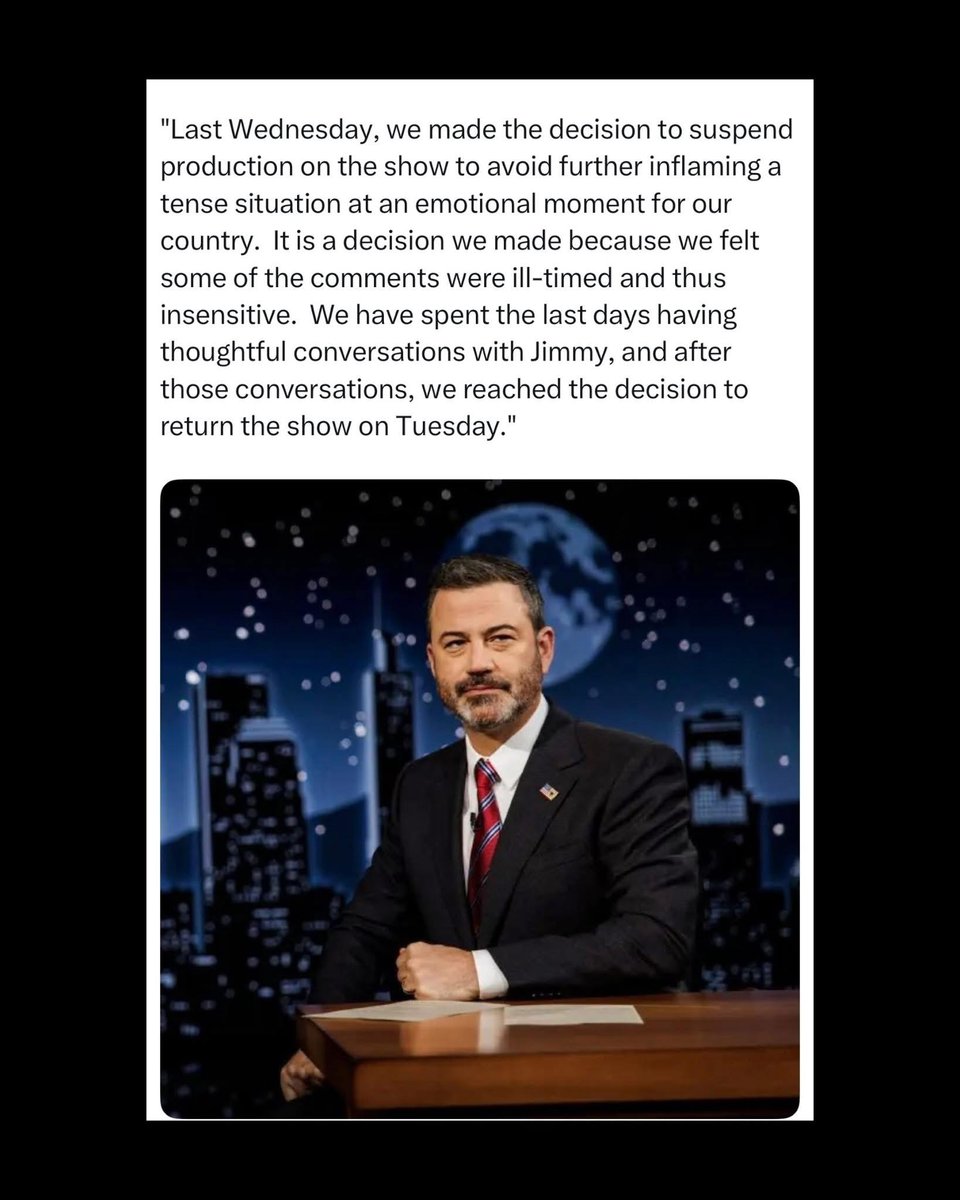
The battle will continue.
Sinclair will continue to pre-empt ABC’s Jimmy Kimmel Live! with news broadcasts on its 30 affiliate stations, the television operator said Monday. https://t.co/S0zKQMPjVR
— The Daily Beast (@thedailybeast) September 23, 2025
Expect more.
What the H-1B Visas mean to America.
Trump has already attacked our schools and universities, our medical research, our museums and performing arts centers. Why not tech!
Hey, Let’s Undermine America’s Technology, Education and Research!
H-1B visas: The latest front in a campaign of destruction
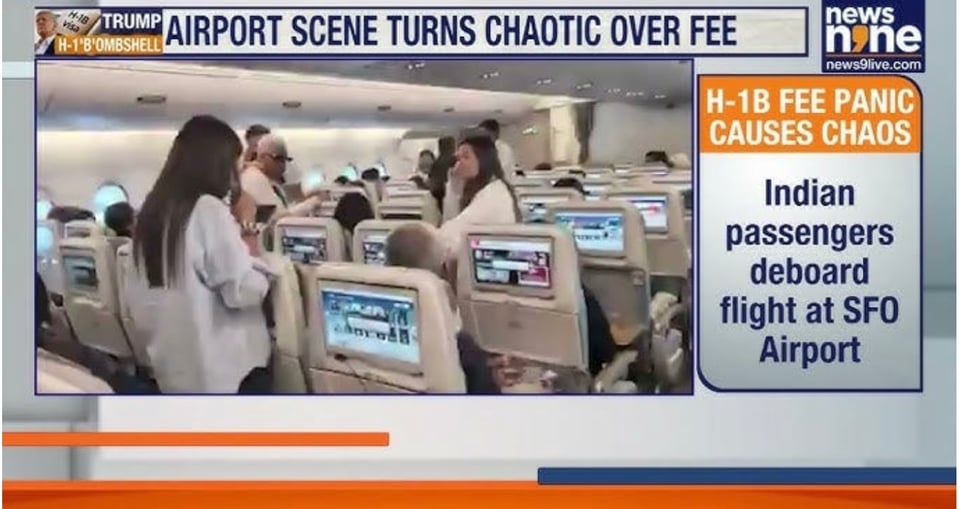
It often seems as if Donald Trump and his minions are engaged in a systematic campaign to undermine America’s preeminence in the world.
We attracted investment from around the world in part because we had rule of law: Businesses trusted us to honor property rights and enforce contracts. So the Trumpists turned us into a nation where the government extorts ownership shares in corporations and masked government agents seize foreign workers, put them in chains, and imprison them under terrible conditions.
We lead the world in science thanks to our unmatched network of research universities and globally admired government agencies like the National Institutes of Health. So the Trumpists are doing their best to destroy both university and government research.
And our economic success — the way we have pulled ahead of other advanced nations over the past generation — rests almost entirely on our leadership in digital technology. So the Trumpists are pulling the rug out from under tech, too.
H-1B visas are a critical ingredient in America’s success. They allow the best and the brightest from around the world to teach in our universities, do research in our research institutes, and work in our tech sector.
The rollout of Trump’s new $100,000 fee for holders of H-1B followed what has become a familiar pattern. First, without warning, the White House announced a drastic policy change that, on its face, looked catastrophic for many workers and businesses. As NBC put it, the announcement set off “panic and chaos” among workers, companies and governments. Businesses and universities advised their foreign workers not to leave the country, because they might not be able to return to the United States. In at least one case, large numbers of passengers demanded that they be allowed to get off a plane about to depart San Francisco for Dubai.
Then — a day late and $100,000 short — the administration scrambled to limit the damage, announcing that this was a one-time fee that didn’t apply to those holding previously issued visas. Needless to say, the initial proclamation didn’t state any of these later clarifications. Magnifying the chaos, the clarifications were announced by posts on X — which does not, as far as I know, constitute an official channel for statements of U.S. policy.
And there is an outstanding legal question: does Trump even have the legal right to impose these fees? Probably not, according to Aaron Reichlin-Melnick of the American Immigration Council. The lawsuits are being filed as I write. However, it’s all too possible that a supine Supreme Court will let him get away with hammering yet another nail in coffin of the American rule of law.
The chaos of the announcement aside, Trump’s new policy on H-1B visas is a disastrous move. It will damage American leadership in the network of sectors — tech, education and research — that has driven our economic success for decades. And it will probably backfire even in its stated goal, which is to create more good jobs for native-born workers.
Normal economic analysis suggests that allowing highly educated foreigners to work in the United States is highly beneficial to the U.S. economy. Most directly, these workers add to America’s GDP. Consequently, highly educated foreign workers increase U.S. tax revenue, thereby helping to pay for Social Security and Medicare without claiming benefits. Moreover, by increasing the supply of high-education labor relative to less educated workers, they also help mitigate income inequality.
There is an additional bonus arising from the fact that H-1B workers are largely employed in the tech industry. For tech is an industry characterized by strong “positive externalities”: Every successful company helps create an environment favorable to other companies. As a result, more high-tech companies want to locate in Silicon Valley and other clusters because they are home to an existing network of successful tech companies.
The larger the industry, the greater are the technological spillovers — loosely speaking, the shop talk among engineers which enables companies to learn from each other. Furthermore, the larger the industry, the more extensive the network of companies that play specialized, complementary roles. For example, Silicon Valley’s uniquely vibrant venture capital scene is as much a consequence as a cause of tech’s success. And the larger the industry, the deeper and more flexible the market for specialized skill. That is, in a large tech industry expanding firms can easily recruit talent and talented workers can leave less successful firms and find new jobs.
Some readers may realize that I just described the “Marshallian trinity” of forces that support industrial localization. Anyway, these forces are especially strong in tech. They are the reason Silicon Valley is Silicon Valley. And the tech industry’s positive externalities mean that we should be very wary of any policy that might undermine the virtuous circle that explains America’s technology success.
Although I have focused so far on the U.S. tech sector, the same set of phenomena underlie the success of the American educational and research sectors. Top universities such as MIT, Stanford and Harvard are made immeasurably greater by the ability to hire the best faculty from around the world. Likewise for the unparalleled National Institute of Health and our research clusters in biotech and applied engineering.
Let’s consider a historical example: America took the lead in world scientific research during and after World War II with critical help from refugees fleeing Nazi Germany, who helped build everything from the atom bomb to the space program. The Trumpists should watch Oppenheimer.
The success of these sectors is, in turn, at the core of U.S. economic success more generally. The influential Draghi report on European competitiveness asked how much of the growing U.S. productivity advantage since 2000 can be attributed to our lead in digital technology. The report’s answer is, basically, all of it.
If you read the White House proclamation on H-1B visas, however, it’s clear that whoever devised the policy — Stephen Miller? Steve Bannon? — understands none of this. They clearly imagine that there are a bunch of highly paid technology jobs whose existence can be taken for granted, and that these jobs can simply be taken away from people they don’t like and given to native-born Americans.
That is not, in fact, how it works. America’s strength in tech isn’t the result of some inherent, indestructible natural advantage. If natural advantage determined industrial success, Silicon Valley would still be growing apricots. Instead, as I said, our tech industry rests on a virtuous circle of self-reinforcing success, which depends above all on the industry’s ability to attract talented workers from around the world. Cut off the supply of such workers, and you risk ending that virtuous circle, maybe even turning it into a vicious circle of decline.
One more thing: Trump’s visa proclamation basically gave his officials open-ended authority to waive the fees for people and companies they like:
The restriction imposed pursuant to subsections (a) and (b) of this section shall not apply to any individual alien, all aliens working for a company, or all aliens working in an industry, if the Secretary of Homeland Security determines, in the Secretary’s discretion, that the hiring of such aliens to be employed as H-1B specialty occupation workers is in the national interest and does not pose a threat to the security or welfare of the United States.
The potential for corruption — for using selective granting or withdrawal of visas to extract political favors and outright bribes — is obvious. “Nice tech company you have here. It would be a shame if something were to happen to your work force.” Will Trump and company abuse this power? Do bears do their business in the woods?
There are many valid criticisms one could make about the details of the H-1B program, which could definitely be improved. But Trump’s attack on the program is purely destructive, knocking away yet another pillar supporting American greatness. (Paul Krugman, Professor, CUNY Grad Center, Nobel Prize Laureate and former NY Times columnist. Also, according to Donald Trump, a “deranged BUM.” Substack)
One more thing.
The New York Times article announcing Trump’s announcement.
Trump Says the U.S. Will Institute $100,000 Fee for Skilled Worker Visas.
Administration officials said the charge would help American workers. President Trump also announced the terms of a new “gold card” program.
President Trump on Friday said that the federal government would begin adding a $100,000-a-year fee for visas given to skilled foreign workers, a significant overhaul of how the United States distributes what are known as H-1B visas.
He also signed an executive order creating an expedited visa program he called the “gold card,” an idea he previewed in February. The card will cost $1 million, or $2 million if a corporation is sponsoring someone seeking it, White House officials said.
The moves were the latest efforts by the Trump administration in a wide-ranging crackdown on all forms of immigration.
The H-1B fee is likely to face legal challenges. But if it survives, companies that hire skilled international workers would have to pay $100,000 each year for any employee working on the visa, for up to six years. The fee applies only to new applicants, a White House official said.
Either the person is very valuable to the company and America, or they’re going to depart, and the company is going to hire an American,” Howard Lutnick, the commerce secretary, said at the signing in the Oval Office on Friday. “And that’s the point of immigration: Hire Americans and make sure the people coming in are the top, top people.”
He added: “Stop the nonsense of letting people just come into this country on these visas that were given away for free.”
Mr. Trump framed the “gold card” program as a way for the government to raise billions of dollars, and Mr. Lutnick said the program would likely replace all other green card visa programs.
“You can prove exceptional value to the United States of America by contributing a million dollars to the United States of America,” he said on a call with reporters after the signing of the proclamation.
Many industries rely on the H-1B visas to fill jobs, including technology and finance. Hospitals and universities also make ample use of them. The new fee could substantially affect their ability to fill jobs, changing the nature of the country’s work force.
As of late June, Amazon had over 10,000 workers using H-1B visas, according to government data — by far the most of any company. Other top beneficiaries included Microsoft, Meta, Apple, Google, JPMorgan Chase, Walmart and Deloitte.
Administration officials downplayed concerns about the $100,000 fee, saying it would help American workers’ wages by discouraging companies from using the visas to bring in lower-wage international workers. Such an expense would also limit the number of applicants and provide more certainty for companies that had relied on a lottery, the officials added.
Historically, 85,000 new visas have been provided annually to hire so-called high-skilled foreign workers at companies through that lottery process. If people are selected through the lottery, they are required to pay a fee for a vetting process. The new $100,000 fee is being added to those costs, officials said.
Doug Rand, a former senior official at U.S. Citizenship and Immigration Services under President Joseph R. Biden Jr., questioned the legality of the policy. “Tying an entry ban to a fee, let alone a $100,000 fee, isn’t likely to survive five seconds in court,” he said.
Tom Jawetz, a former senior attorney at the Department of Homeland Security under Mr. Biden, also said the order would come under legal scrutiny. “This is how the mob operates when it demands protection money,” he said. “It’s not how the laws of a country are administered.”
The new fee partly resolves a debate among some conservatives that began last winter. Immigration hard-liners have argued that the foreign visa worker program has hurt the United States, because companies have brought in foreign workers at lower wages, displacing Americans. Business leaders, particularly in the technology sector, have said that the visa program has helped to keep American companies competitive.
The debate has pitted some of Mr. Trump’s most loyal backers against some of his biggest financial boosters. With Friday’s proclamation, the president indicated that, for now, he was siding with those looking to make the visa program more difficult to use.
In the call with reporters, Mr. Lutnick claimed that companies were “very happy” about the fee, “because they would like a process that is known, that is clear and that is swift.”
When a company trains a worker, “you’re going to train one of the recent graduates from one of the great universities across our land, train Americans,” he added. “Stop bringing in people to take our jobs. That’s the policy here.” (New York Times).
Further in The New York Times coverage.
Wall Street banks and tech companies big and small were scrambling on Saturday to figure out how their tens of thousands of employees would be affected by President Trump’s proclamation imposing a $100,000 fee for visas granted to skilled foreign workers.
The change set off immediate confusion over the exact rules and how they would be enforced. Shortly after Mr. Trump signed the proclamation on Friday, employees at Microsoft, Amazon and JPMorgan received notices advising those with H-1B visas who were outside the United States to return before the new rules take effect at 12:01 a.m. Eastern time on Sunday.
The Trump administration sought to address the confusion on Saturday by saying that the fee would only apply to new applicants, and renewals or current visa holders would not be affected. In a post on social media, the White House said the change would “not impact the ability of any current visa holder to travel to/from the U.S.”
Still, many executives, general counsels and human resources departments, as well as their immigration lawyers, said they were coming down on the side of caution this weekend. Several companies and attorneys had already urged workers to return to the United States as soon as possible. Many kept their eyes glued on the White House social media accounts for any pertinent clarification.
————
Although tech companies receive the most H-1B visas, Mr. Johnson underscored that the new fee would also affect workers in the medical and manufacturing industries as well as at universities who receive H-1B visas. “The numbers of companies and industries where H-1B workers play a really critical role is incredibly broad,” he said.
Some policy experts praised the Trump administration’s change and said it would help ensure that companies are not suppressing wages or giving priority to hiring foreign workers over Americans. Lora Ries, the director of the Border Security and Immigration Center at the Heritage Foundation, a conservative think tank in Washington, said the $100,000 fee was a “good start” at reforming the H-1B program because it would make companies prioritize which foreign workers they want to hire.
“Americans aren’t getting a fair shake at the opportunities because too many employers are bending the system,” Ms. Ries said.
But the policy change also raised concerns about the long-term impact on the U.S. economy and corporate America. Venture capitalists warned that the change would add to concerns surrounding an uneven playing field, with only the nation’s largest companies being able to pay the fees or secure an exemption, as technology giants like Apple and Nvidia have already done with certain tariffs.
The challenges of complying may be particularly acute for start-ups, many of which operate for years without reaching profitability.
“There is not a single company that I have invested in the last 10 years that could afford to pay this,” said the venture capitalist and private equity investor Alan Patricof. (To read the full New York Times article, click here)
One more thing. Or two. Or three. Or four.
From Business Insider. Recipients of H-1B visas.
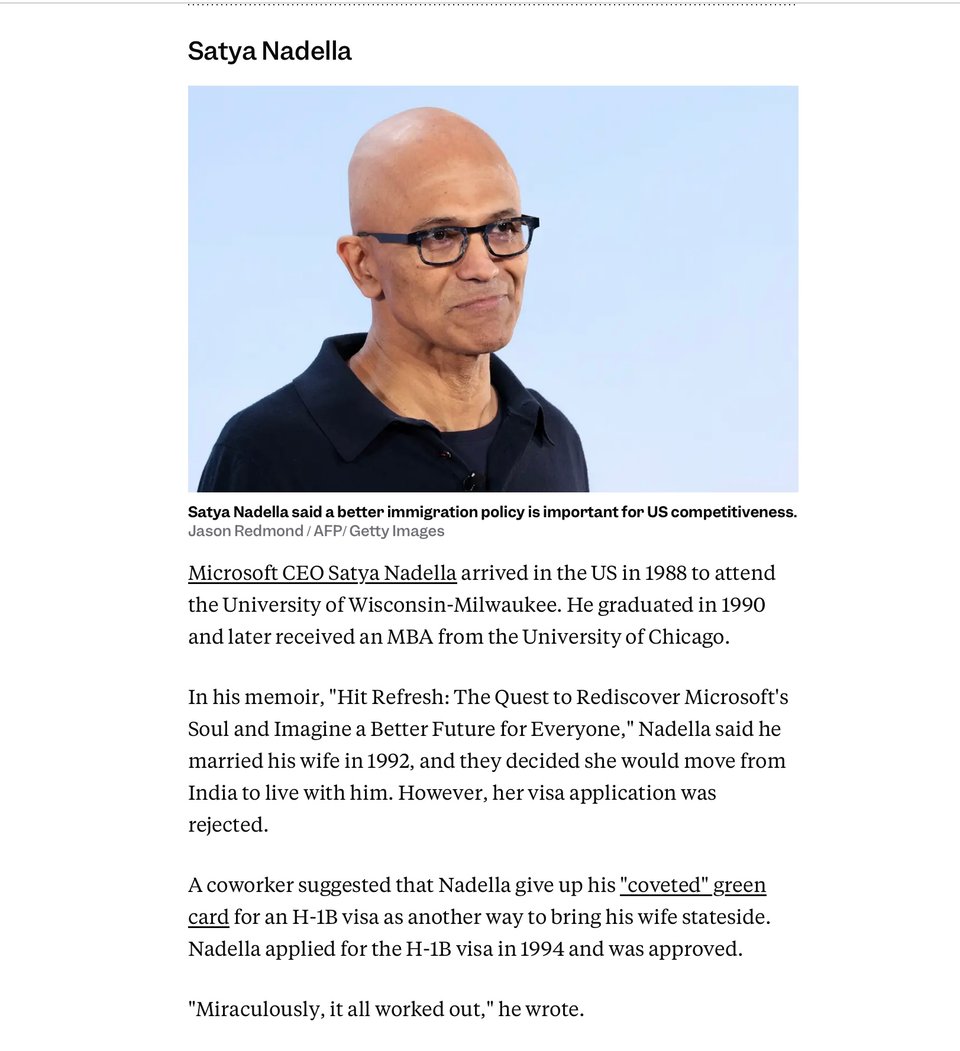
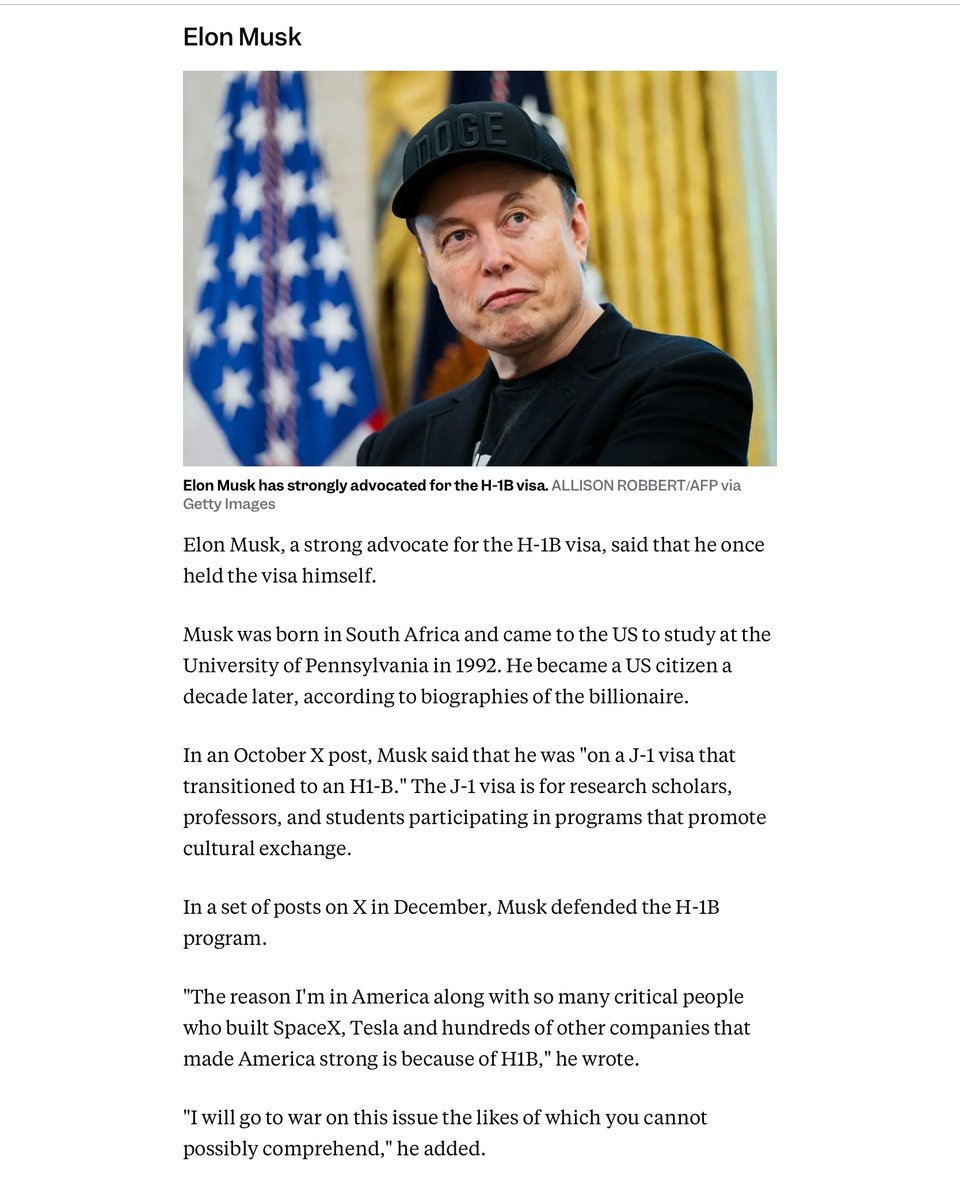
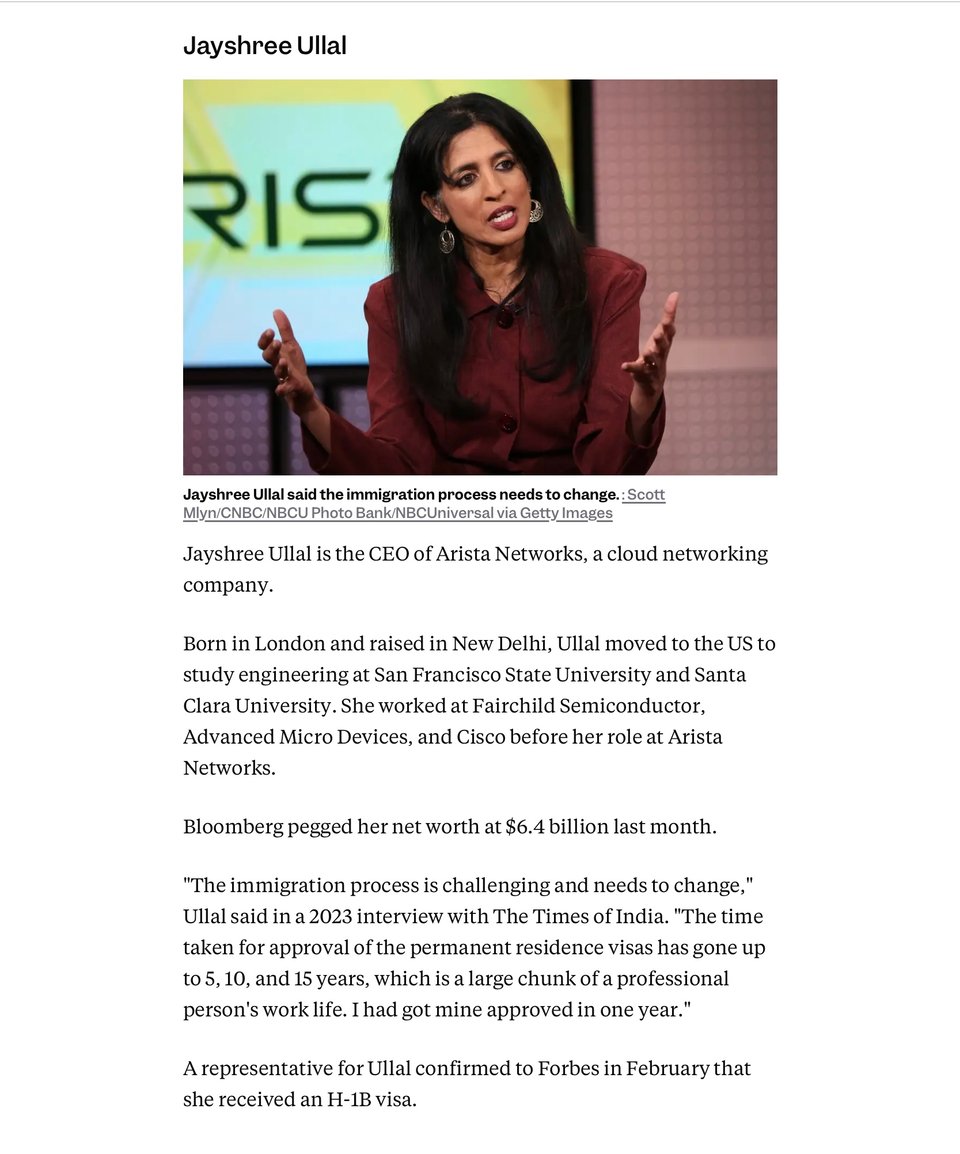
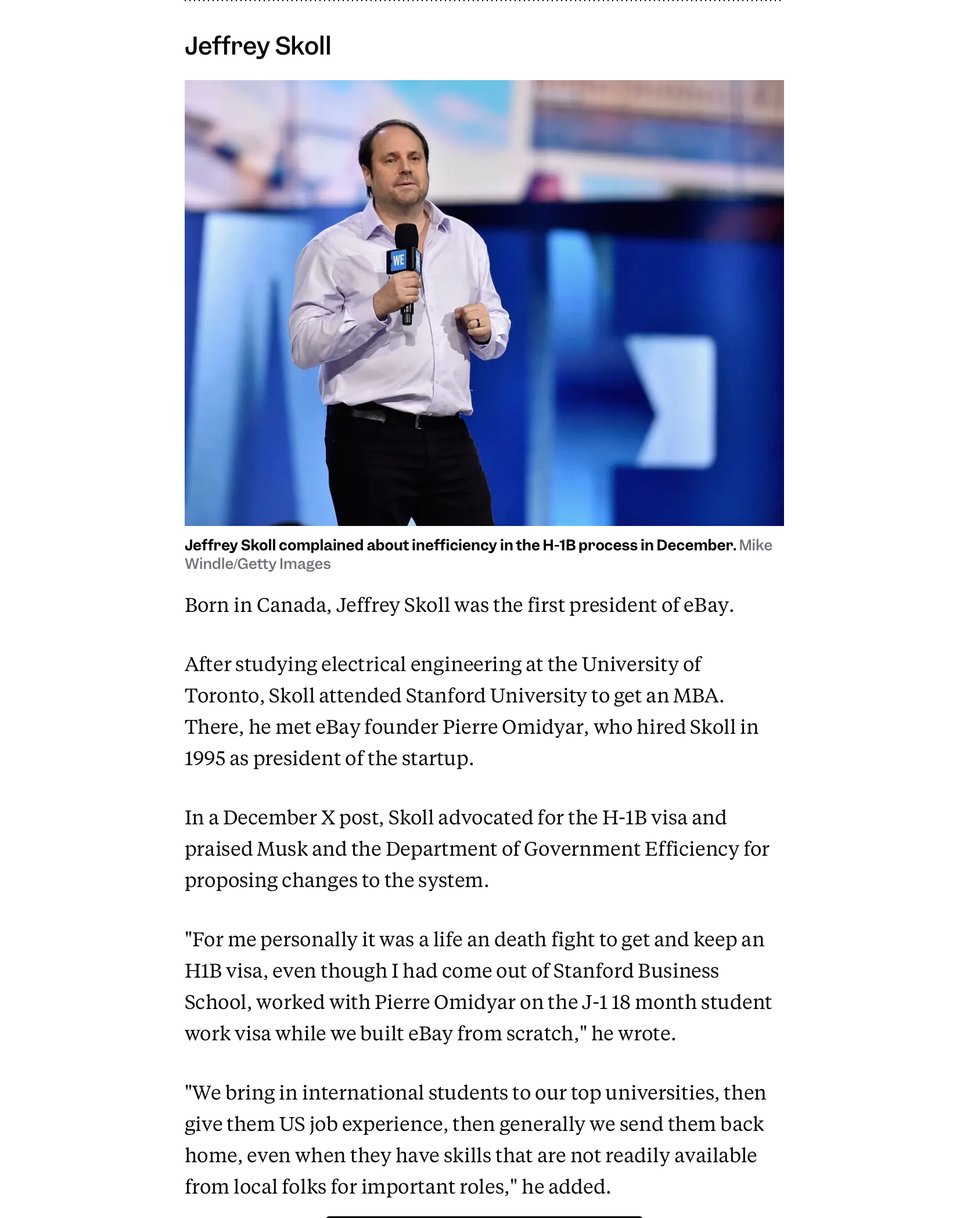
Two attitudes toward American values.
Trump, on free speech and freedom of the press.
NPR: “Regarding Antifa…”
— The Tennessee Holler (@TheTNHoller) September 19, 2025
TRUMP: “Who are you with?”
NPR: “NPR.”
TRUMP: “You’re still here? Won’t be for long… does Antifa have anything to do with your network?” pic.twitter.com/Oecnv9x3J5
Shepard Fairey mural in Philadelphia highlights liberty, justice
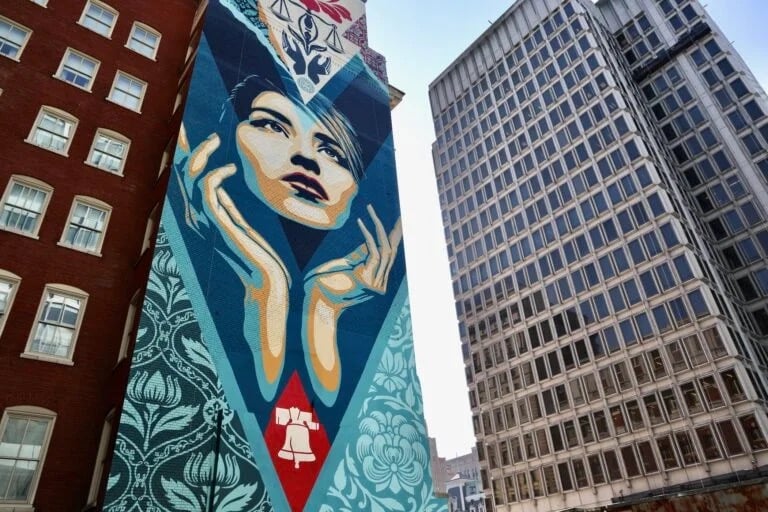
‘Uplift Justice' by Shepard Fairey is painted on the side of a Center City office building on Arch Street, opposite the Municipal Services Building. (Emma Lee/WHYY)
For 25 years the “Declaration of Independence,” a 112-foot mural of a classically Greco-Roman sculpture, looked over one of Philadelphia’s busiest intersections at 15th and Arch streets from the towering wall of what is now a Courtyard by Marriott hotel.
Artist Peter Pagast had used one of the statues at City Hall across the street to evoke the ancient Roman influence of the American republic.
But no more. After a quarter century of exposure to the elements, “Declaration” had to come down.
“It was badly deteriorated,” said Mural Arts Philadelphia project director Brian Campbell. “The building ownership had approached us about doing something. They wanted it restored or replaced.”
Campbell said the cost of restoring would be the same as creating a new mural, so Mural Arts opted for the latter, asking celebrated street artist and designer Shepard Fairey, who came to widespread prominence when he designed the “Hope” poster during the first Barack Obama presidential campaign, to come up with something new.
Fairey’s “Uplift Justice” is strikingly different from its predecessor, whose monochrome palate has been replaced by vibrant pops of teal, aquamarine, scarlet red and yellow. A woman’s face looks upward toward a scale of justice.
So different, but not really. The works from Fairey and Pagast both deliver bedrock ideas about American democracy.
“The last lines in the Pledge of Allegiance are, ‘With liberty and justice for all,’” Fairey said, stressing the final two words. “This to me is about representing that concept of justice, and that relationship between a symbol and our actions in the wake of considering the symbol.”
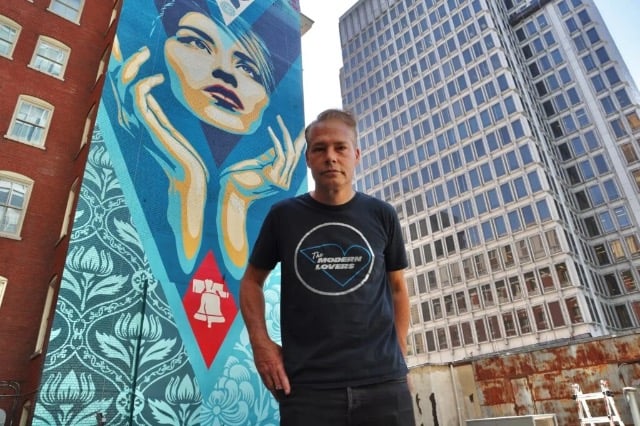
Shepard Fairey stands on a rooftop beside his new mural, ”Uplift Justice.” (Emma Lee/WHYY)
Fairey has created other large-scale public artworks in Philadelphia before, but typically made in wheat paste, which is not designed to last long. Pieces he had installed in Center City and Fishtown over the last 11 years have since disappeared.
“Uplift Justice” was painted directly onto the bricks of its host building, with the intention that it will last for several years, perhaps a couple decades. Fairey said he designed the mural for the long haul, with eyes on America’s 250th anniversary next year.
“We’re living in a time of a lot of political division, and I wanted to focus on some of those original, in my opinion, unassailable principles that guide us,” he said. “That pursuit of liberty and justice is very important. How we each interpret that might be different, but hopefully we can all agree on.
Fairey intentionally used red, white and blue in his color palette, but intentionally used hues of those colors different from the American flag. He said wanted to evoke patriotism while throwing off expectations.
The central design of “Uplift Justice” is set on a background of decorative floral patterns typical of the 19th century. Fairey said he found the patterns on historic Philadelphia textiles.
“I use patterns in a lot of my work because, one, I believe that they’re a really appealing decorative element,” he said. “Two, every single culture globally has created patterns as something pleasing in wallpaper and fabric.”
“For all the arguments about, ‘Oh, I don’t understand how people think from this place or that place,’ there are some pretty universal things that we all enjoy,” Fairey said. “Patterning and flowers.” (WHYY)
Trump played doctor yesterday too.
Or did a worm just eat his brain? Can you catch that if you stand near RFK, Jr?
During a White House briefing yesterday, Trump made medical recommendations - focusing on a supposed link between acetaminophen (Tylenol), vaccines, and autism—an assertion that is not supported by scientific evidence.
-Discouraging acetaminophen - Tylenol: Trump urged pregnant women and parents to avoid using acetaminophen (Tylenol), even going against the recommendations of medical groups. He told pregnant women to "tough it out" unless they had a dangerously high fever.
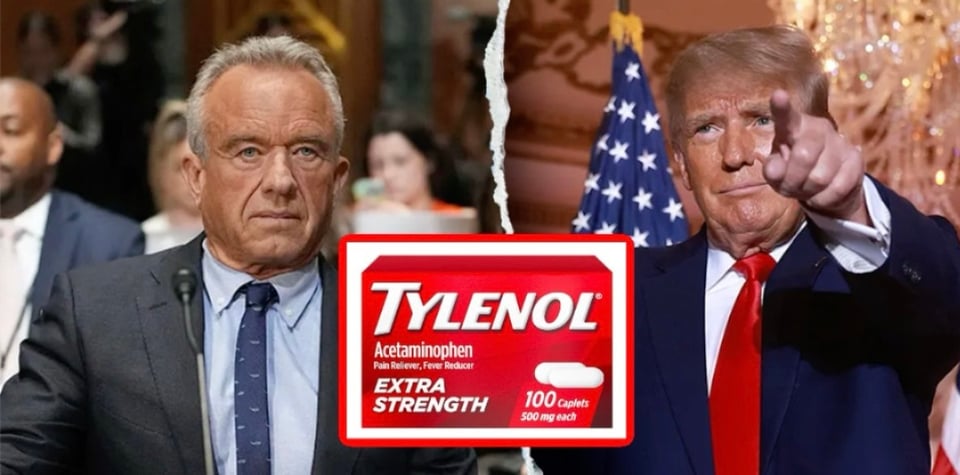
Suggesting a link to autism: Following ideas advanced by his Health Secretary, Robert Kennedy, Jr. Trump supported the unsubstantiated idea that acetaminophen and vaccines cause autism.
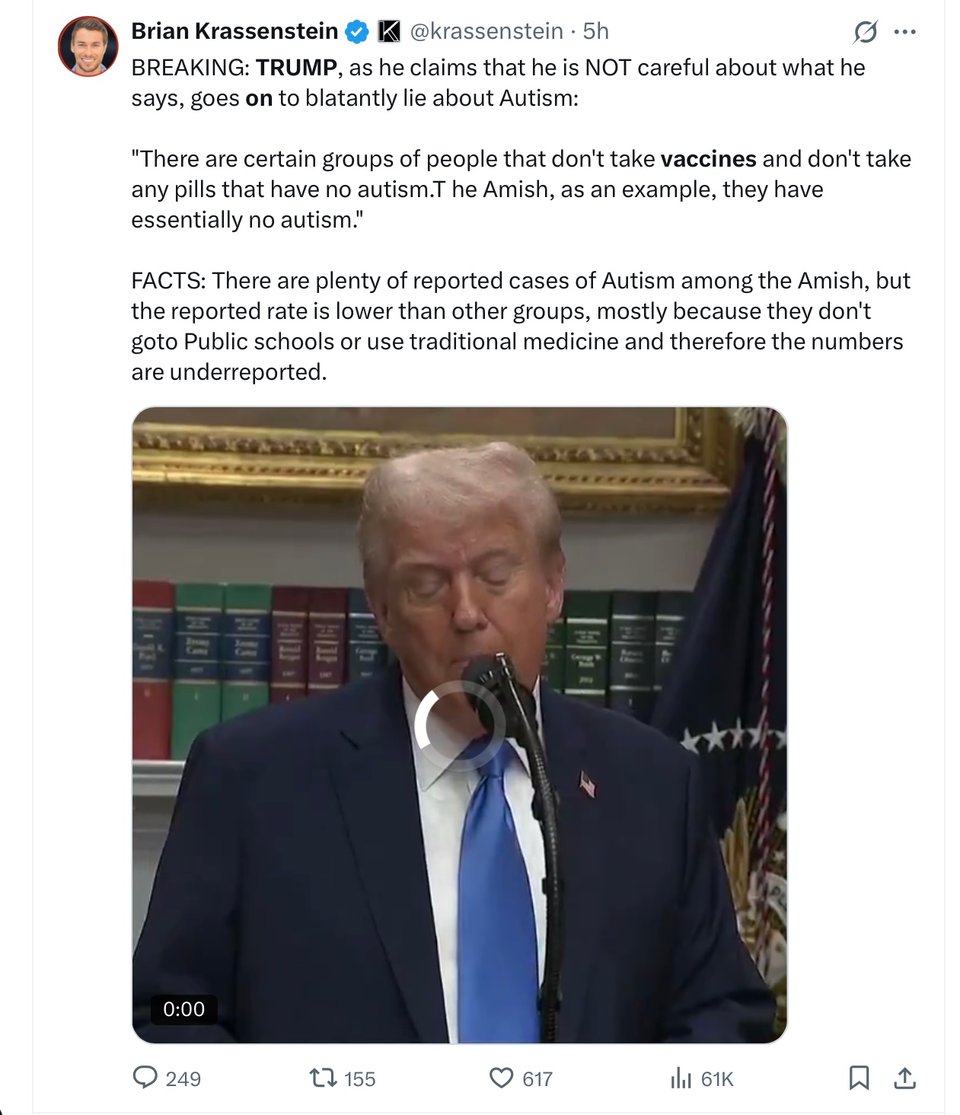
- He also recommended that children not be given vaccines according to the medically recommended schedules.
- “They get fried,” he said.
-
Previously, on Air Force One as he returned from the U.K., he said "little babies" are injected with "80 vaccines,""enough for a horse."
Thought he was a wack-o before?
What better way to welcome in the Jewish New Year than to celebrate Russ & Daughters in NYC!
L’Shanah Tovah to all.
Russ & Daughters in NYC celebrates '100 years of appetizing' and family
What's better on a weekend morning than savoring a lightly toasted bagel with lox and schmear while listening to Weekend Edition [on NPR].
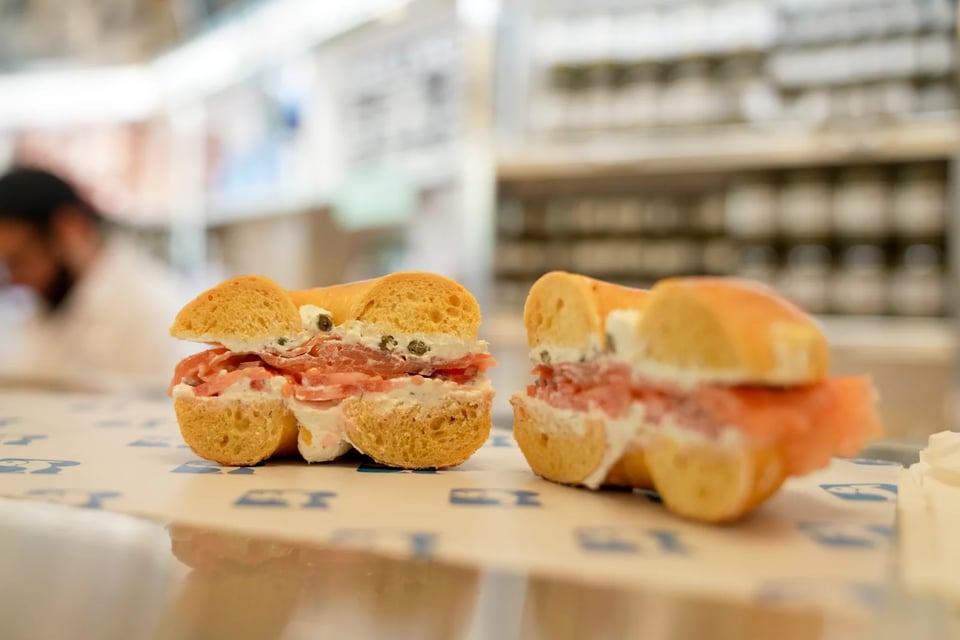
The iconic lox bagel — a "Classic with the Works" — prepared at Russ & Daughters.
It's a tough combo to beat — but could perhaps be made even better by eating that bagel at Russ & Daughters, which has been on New York's Lower East Side for 114 years and also sells latkes, babka, rugelach, a dozen different kinds of salmon and is about the size of a subway car.
"Russ & Daughters for me was a literal mom and pop. Because it was my mom and pop," says Niki Russ Federman, who is a fourth generation co-owner of the family business.
"As a kid, I would wait at the doors for the produce delivery guys to come, and they would wheel in with their handcarts. They had sacks, 50 pound sacks of onions, carrots, potatoes. And I would climb on top … of the sack as if it were my chariot."
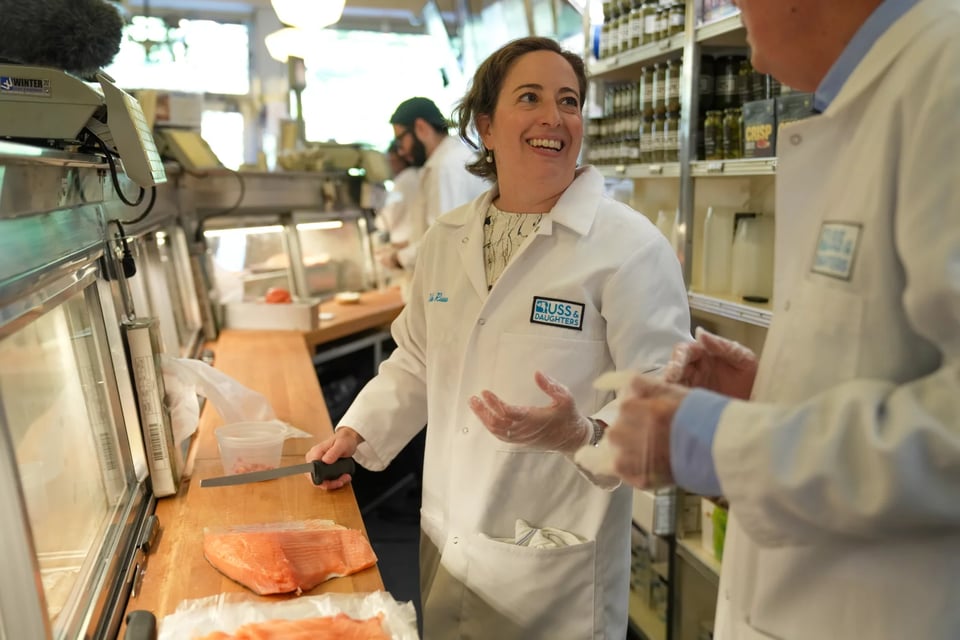
Niki Russ Federman helps NPR host Scott Simon slice paper thin strips of salmon
A partial family tree shows just how deep the family's roots run in the business: Niki Russ Federman's parents, Mark and Maria, inherited the shop from Mark's parents — Anne and Herb who also had a daughter, Tara. Tara didn't stay in the family business but did give birth to a son, Josh Russ Tupper, who is co-owner along with Niki.
Niki and Josh's grandmother, Anne, was one of three original "daughters" — her father was Joel Russ, the first Russ in Russ & Daughters.
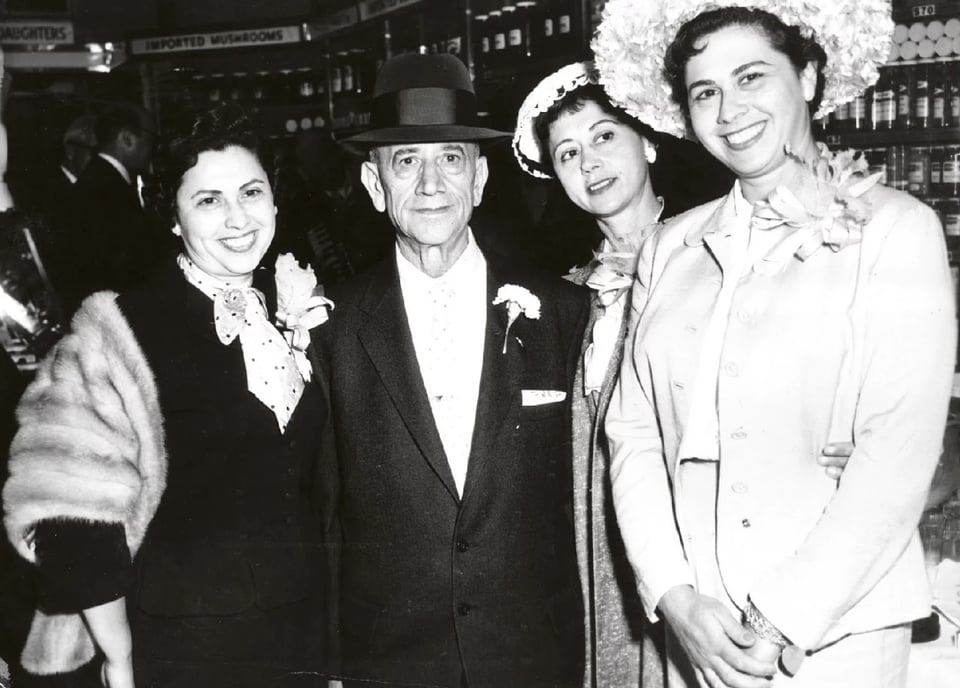
Hattie, Joel, Ida and Anne, circa 1955.
From that rich history now comes a new cookbook, full of family lore, musings and recipes for matzo ball soup, noodle kugel, smoked trout mousse, Aunt Ida's stuffed cabbage and more. It's called: RUSS & DAUGHTERS: 100 Years of Appetizing.
And, that word — appetizing — makes the shop so special.
"We're not a deli," says Niki Russ Federman. "We're one of the last remaining appetizing stores. Both come from Jewish dietary laws. But a delicatessen, in its traditional form, is a place you go for smoked and cured meats. So think pastrami, corned beef, for example. And then the appetizing store is fresh fish and dairy."
Over a century ago, when Joel Russ founded his business, that fish was herring. "My great-grandfather's older sister was a herring maven," explains Josh Russ Tupper. Channah sponsored her little brother's immigration to New York from a small shtetl in Europe around the turn of the 20th century. Before Joel Russ was able to open a store, he sold schmaltz herring from a barrel on the street.
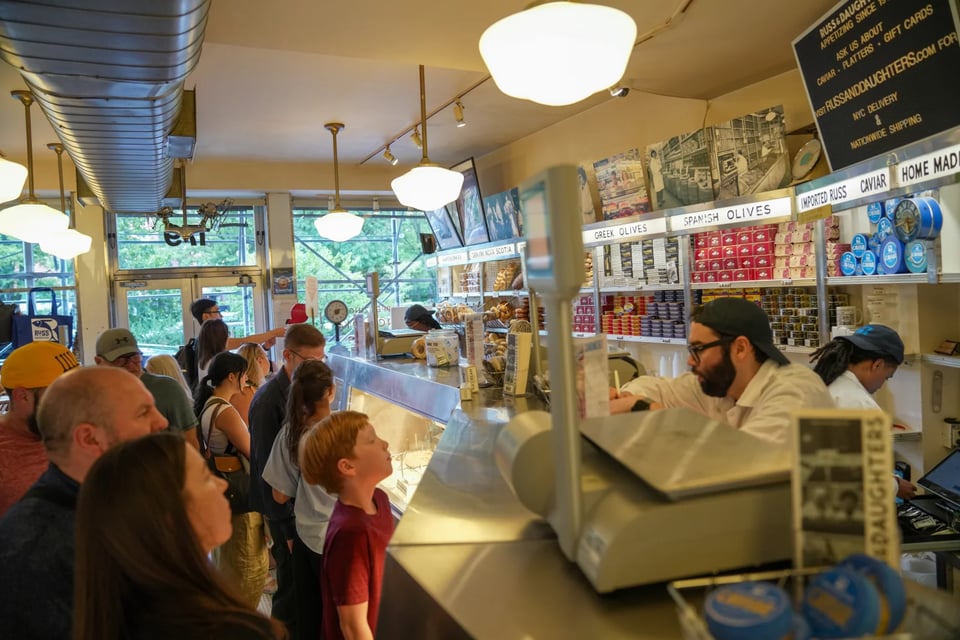
Customers order food over the counter at Russ & Daughters.
These days, the fish that draws locals and tourists alike to Russ & Daughters is the salmon. "I think that a bagel and lox is one of the literal tastes of New York," says Niki Russ Federman.
To get that classic taste, a handful of professional "slicers" — an official job title — work behind the counter slicing salmon so paper thin you might be able to read the fine print on a cell phone contract through it. "Once you get good it looks like it's easy," says Russ Federman, as she moves a sharp, slender knife across an opulently orange side of salmon, "but it's actually quite tough." It typically takes three months of practice before a Russ & Daughters slicer is fully trained. And it's not for show, either.
"The thinness of the slice with the proper angle gives you that subtlety of flavor that you just don't get with a thick slice or a machine cut slice," adds Niki Russ Federman. "It's definitely not the most practical or fast way to do it, but it's the best way."
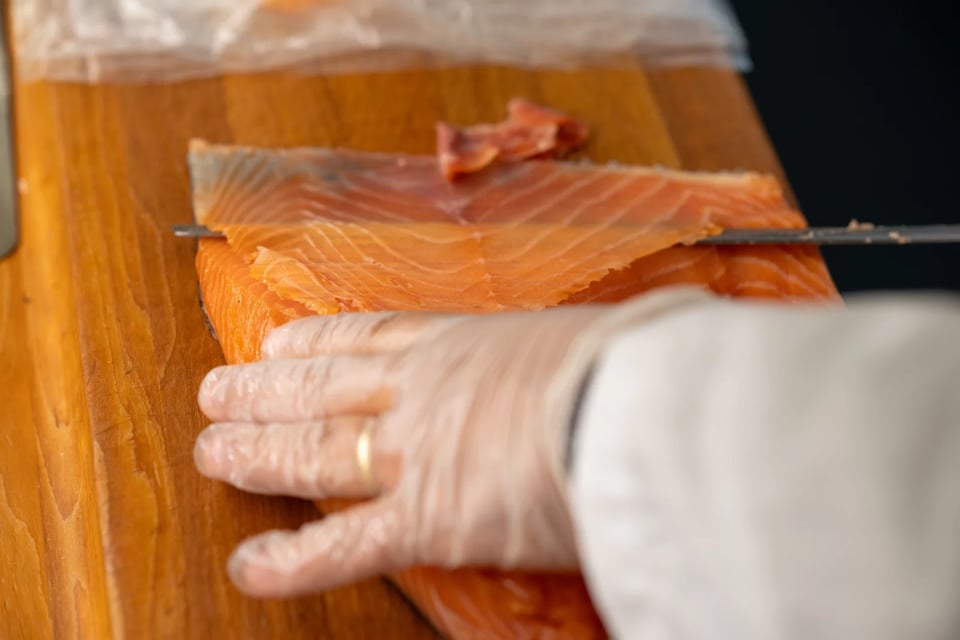
Slicers — a real job title — practice their art at Russ & Daughters.
For the family — and even for customers unfamiliar with the Yiddish expression — that is essentially what keeps Russ & Daughters haimish. "Haimish is a feeling as much as it is a philosophy," Niki Russ Federman and Josh Russ Tupper write in their cookbook. "To us it means never straying far from our roots."
"Our food especially is the food of memory," says Niki Russ Federman. "It's through the food that you connect with others and you connect with who you are and where you come from … it's a time portal. It can transport you immediately to your past."
And at Russ & Daughters, the past is right outside the front door and around the corner on Orchard Street, where Joel Russ first sold herring from a barrel to his fellow immigrants, who populated the tenement buildings of the Lower East Side. After graduating to a pushcart, then a horse-and-wagon, Joel Russ eventually made enough money to open a shop of his own. Russ & Daughters was not its original name.
"One of the first names was Russ's Cut Rate Appetizing," says Niki Russ Federman. "If there had been a son, it probably would have been Russ & Sons." But Joel Russ had three daughters.
"Before I knew the word feminism," Supreme Court Justice Ruth Bader Ginsburg said in a 2014 interview, quoted in the cookbook, "seeing a sign for Russ & Daughters taught me that women could matter just like men in an enterprise."
Since taking over the business, Niki Russ Federman and Josh Russ Tupper have added a bakery in Hudson Yards, a location in Brooklyn and a cafe, just a few blocks south of where their great-grandfather got his start.
"We created this restaurant to have the sit-down appetizing experience," says Josh Russ Tupper. "Really, the way you should eat this is four-plus people. Get your platter of smoked fish. Order from the whole menu."
On that menu: pickled herring trio, soft scrambled eggs with caviar, kasha varnishkas, borscht, and two kinds of babka French toast. One dish you won't find on that menu? Matzo brei.
"It was," explain Niki Russ Federman and Josh Russ Tupper.
"It seems simple," they write in their cookbook. "Sheets of matzo, soaked in water, then dipped in eggs and fried in butter."
But it was driving everyone crazy.
"Turns out that the simplest dish is the hardest," says Niki Russ Federman. "Matzo brei was the bane of our existence."
Everyone who ordered it, the cousins explain, had a memory from their childhood of their matzo brei, or their grandmother's matzo brei, or their father's matzo brei. And they were all unhappy. "Because we could never match their taste memory," concludes Russ Federman.
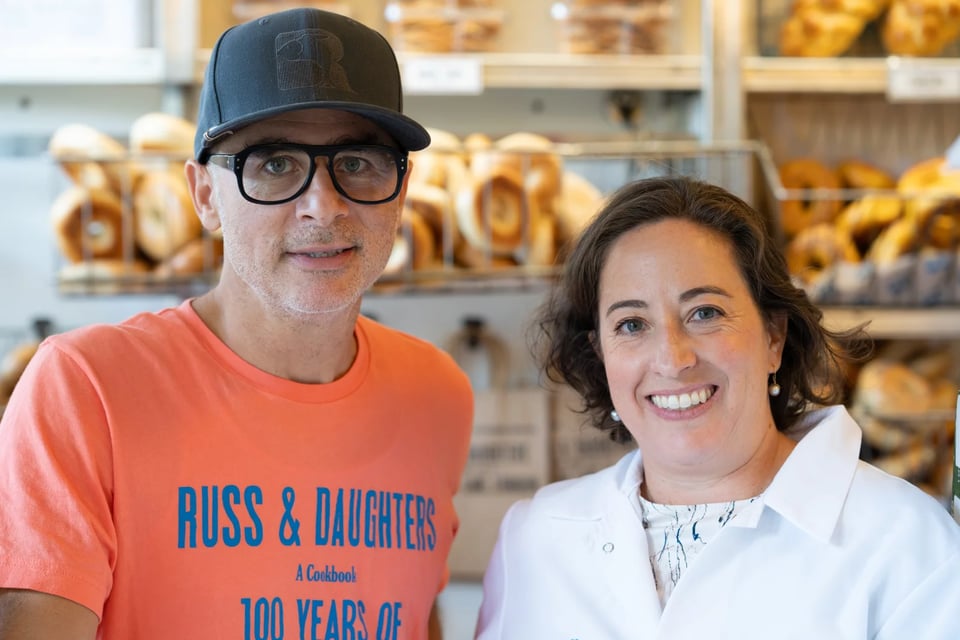
Cousins Josh Russ Tupper and Niki Russ Federman honor their family's food legacy in their new cookbook.
So, while you will no longer find it on the menu, except around Passover, you can still sit down at Russ & Daughters Cafe and order matzo brei — if you're brave enough. They will happily make it for you, but it will be their way, with apologies to your Bubbe.
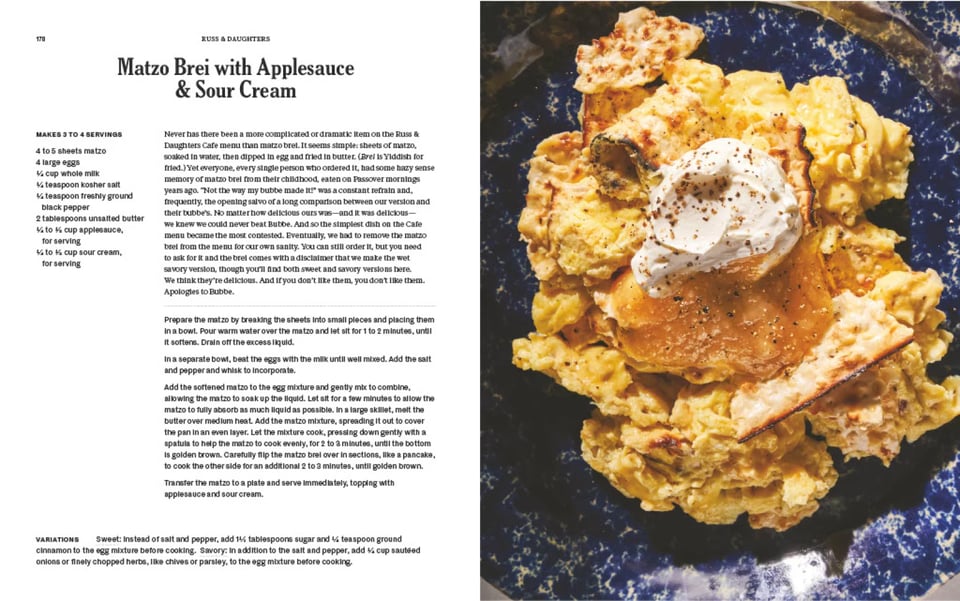
Matzoh Brei.
(NPR)